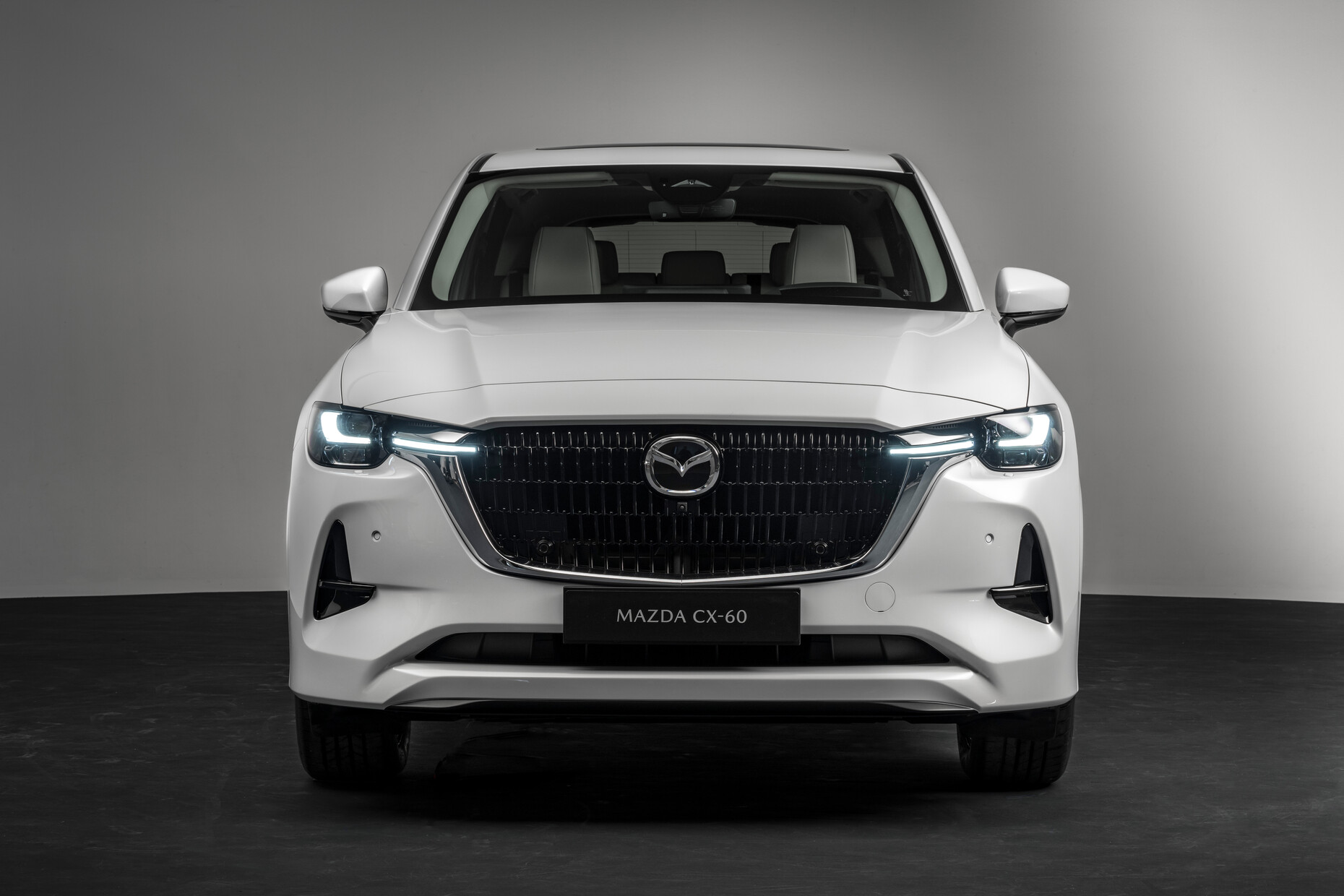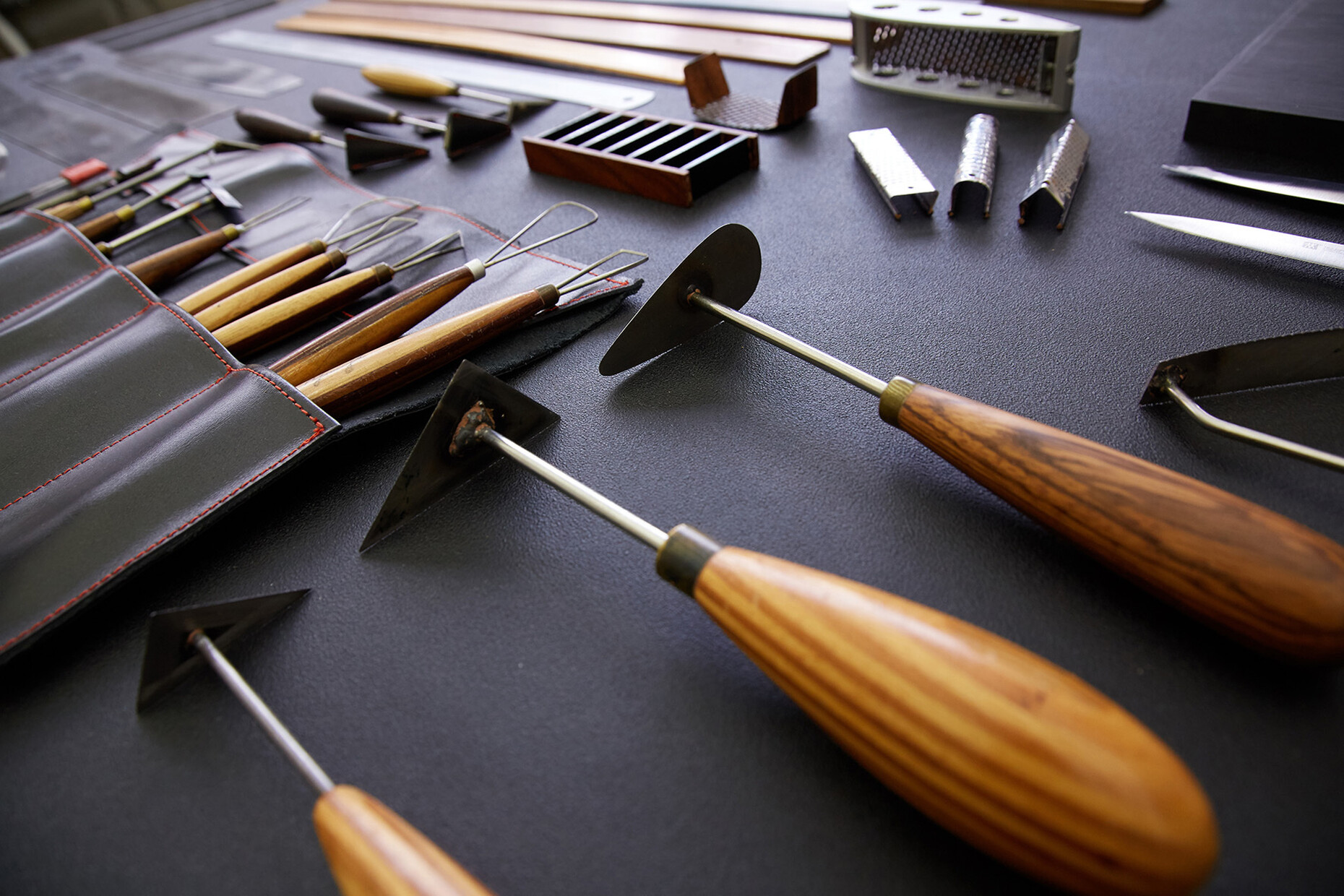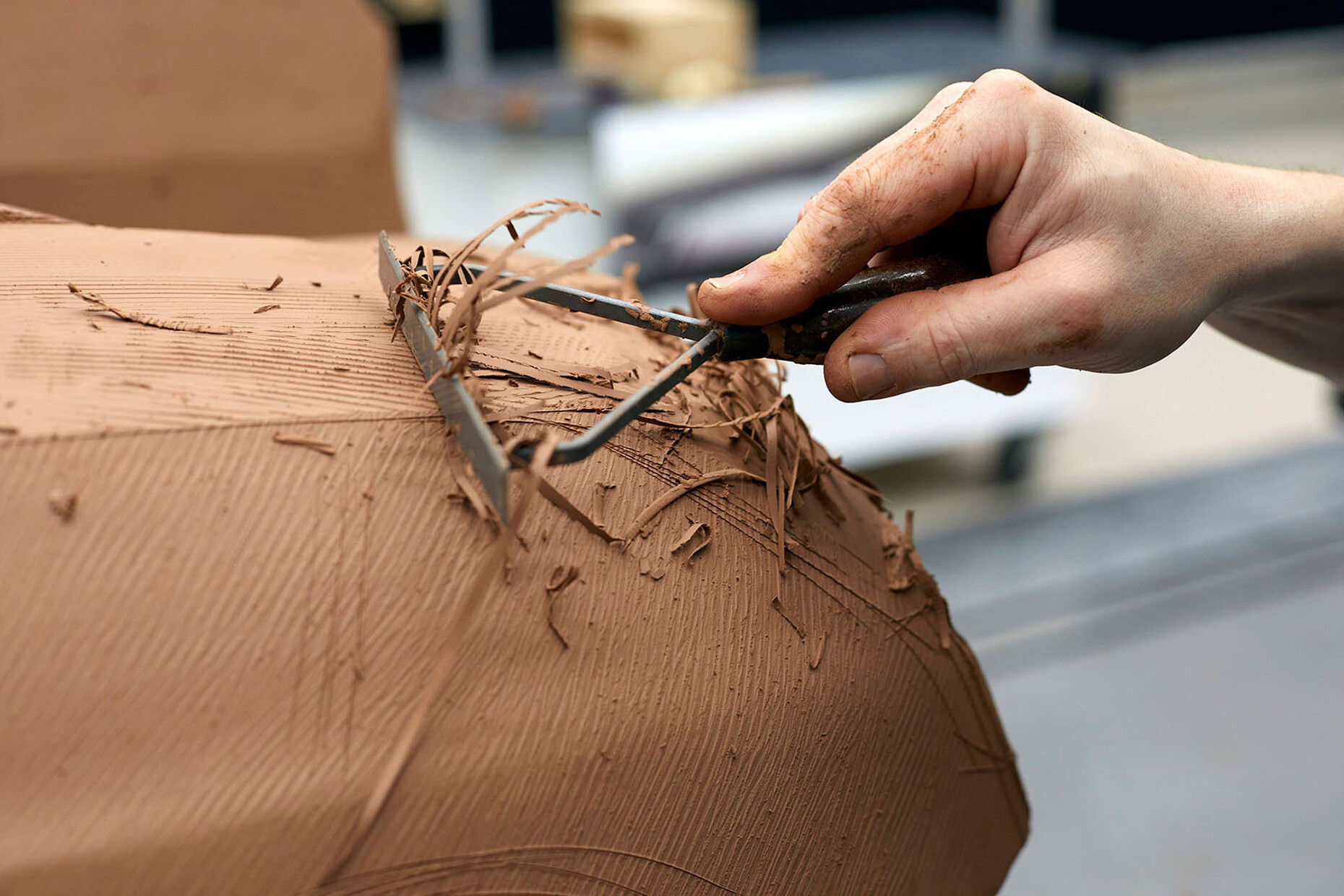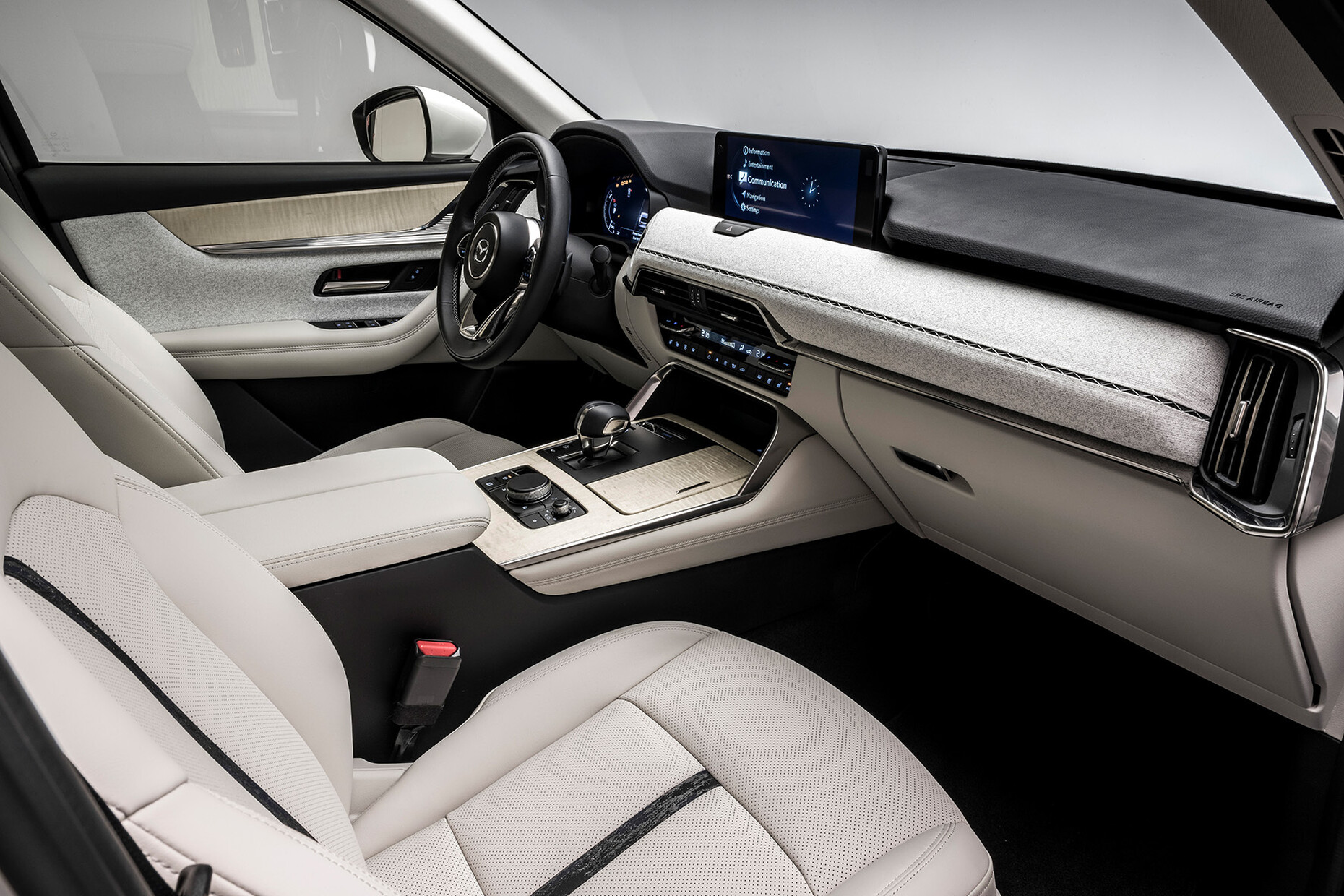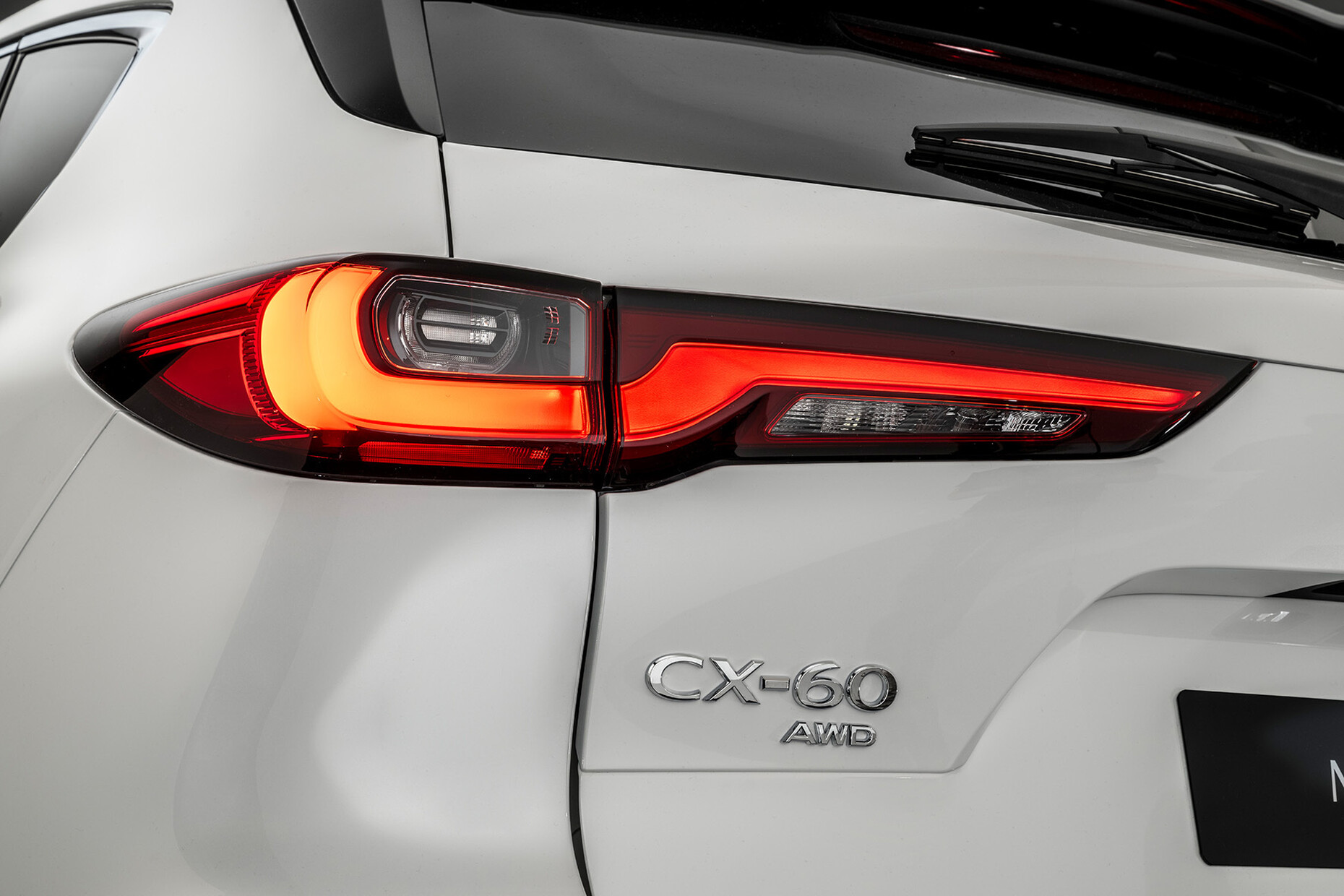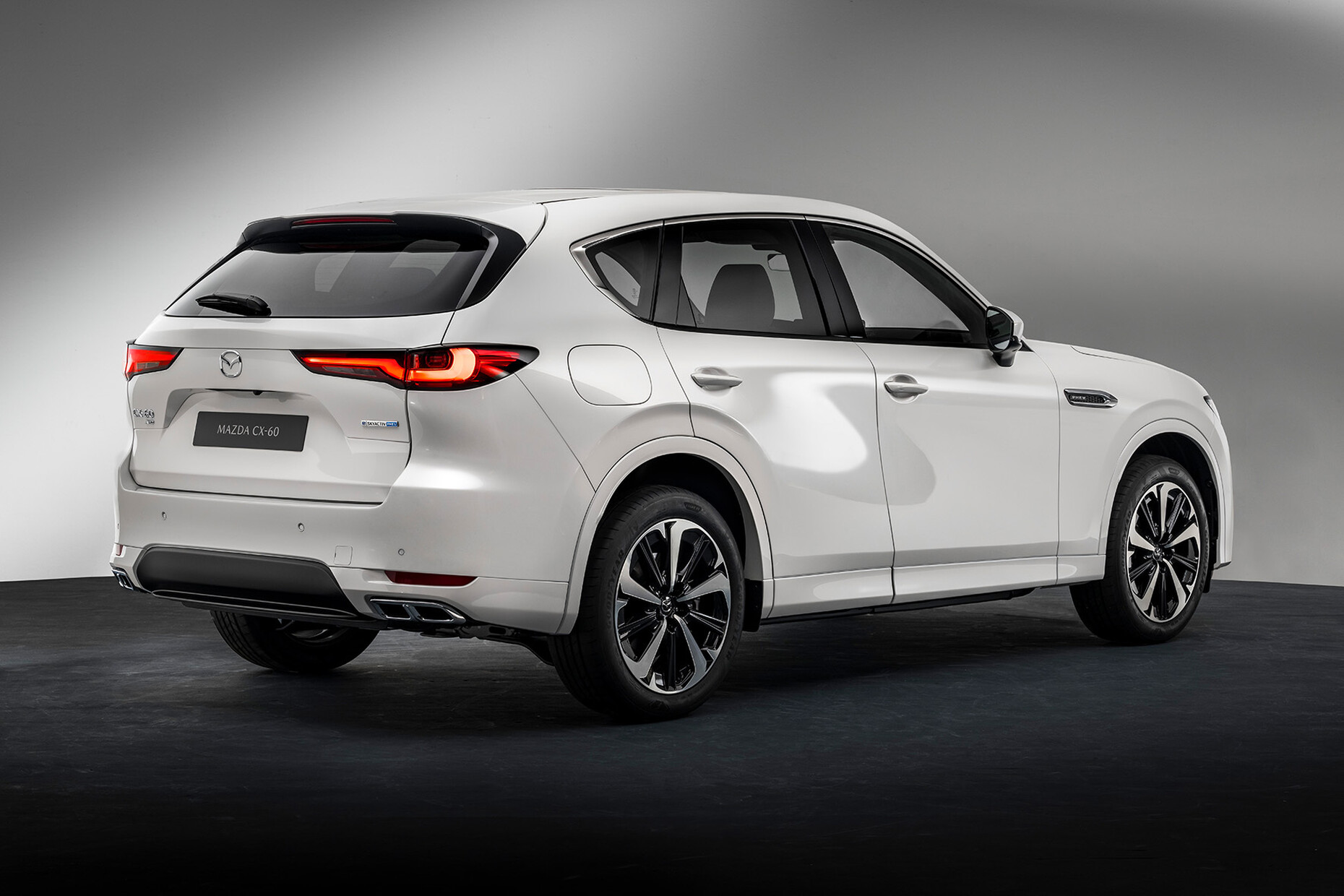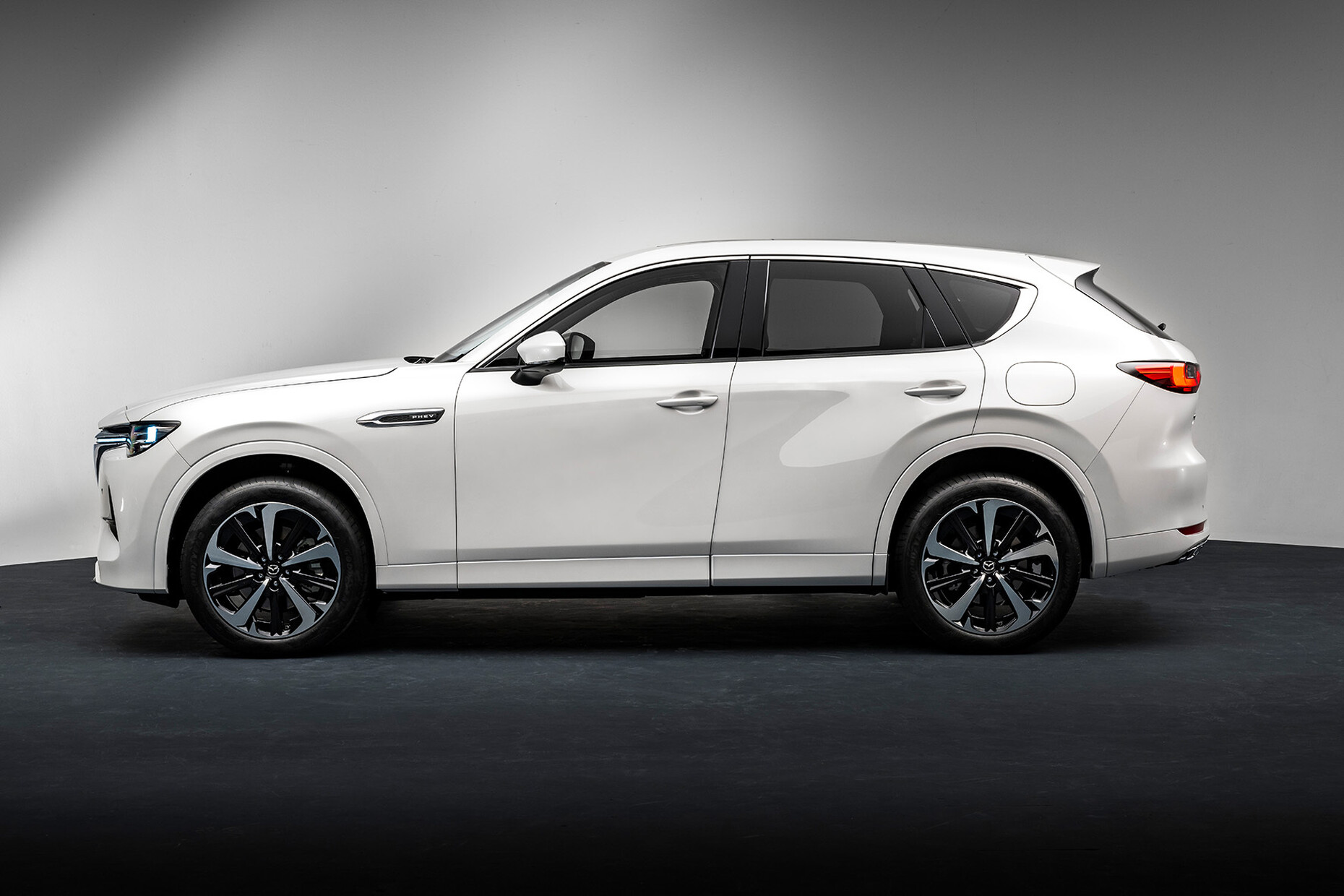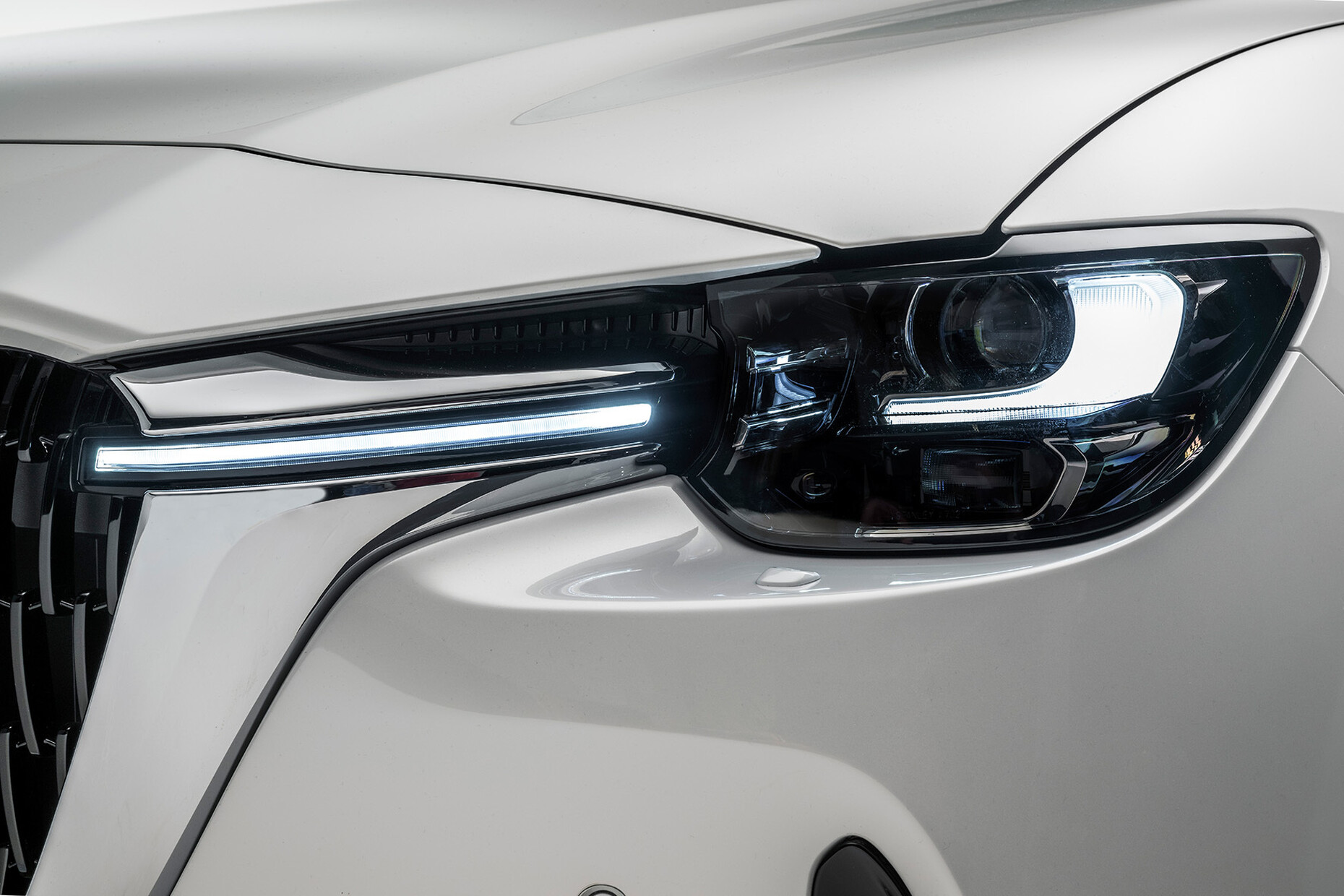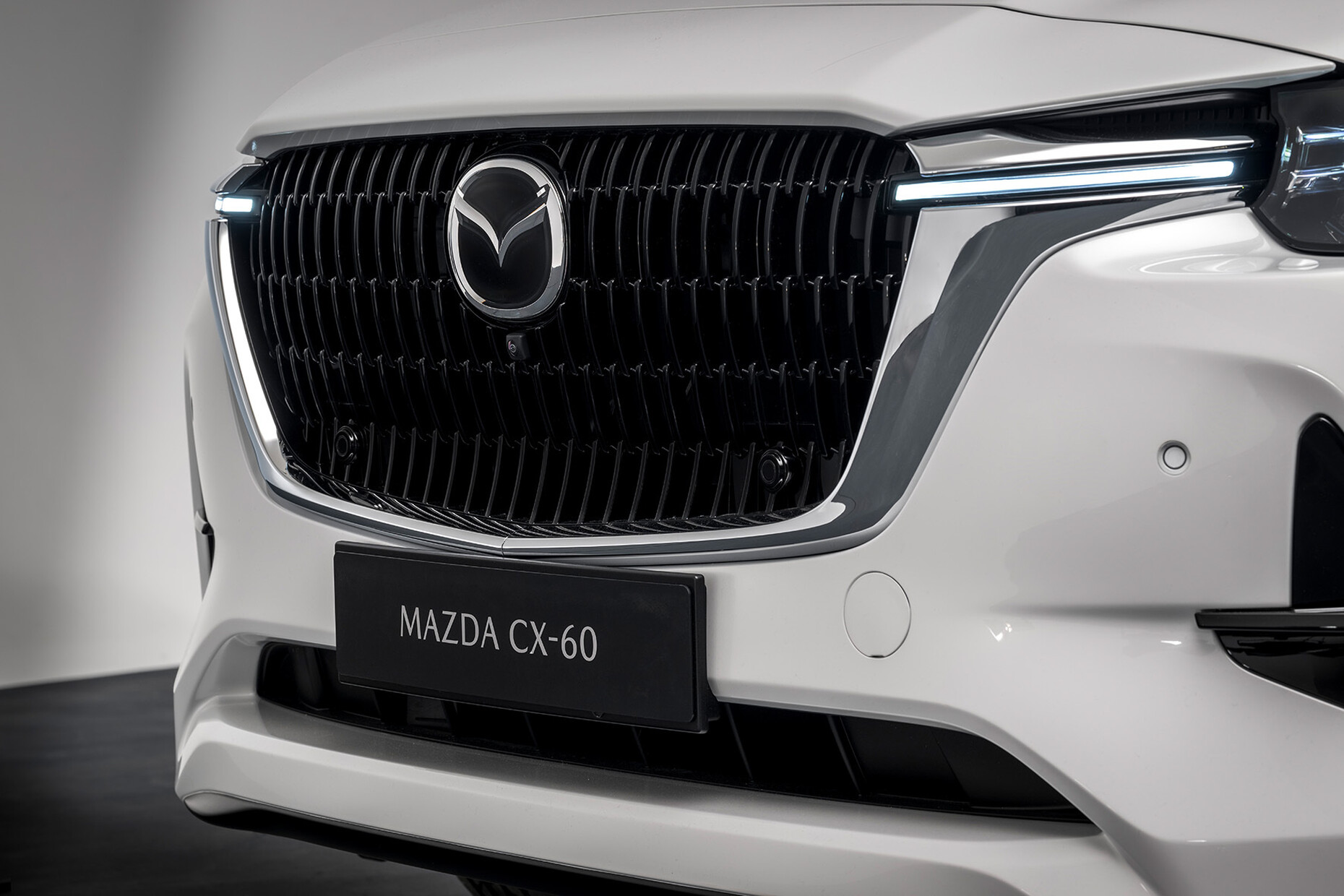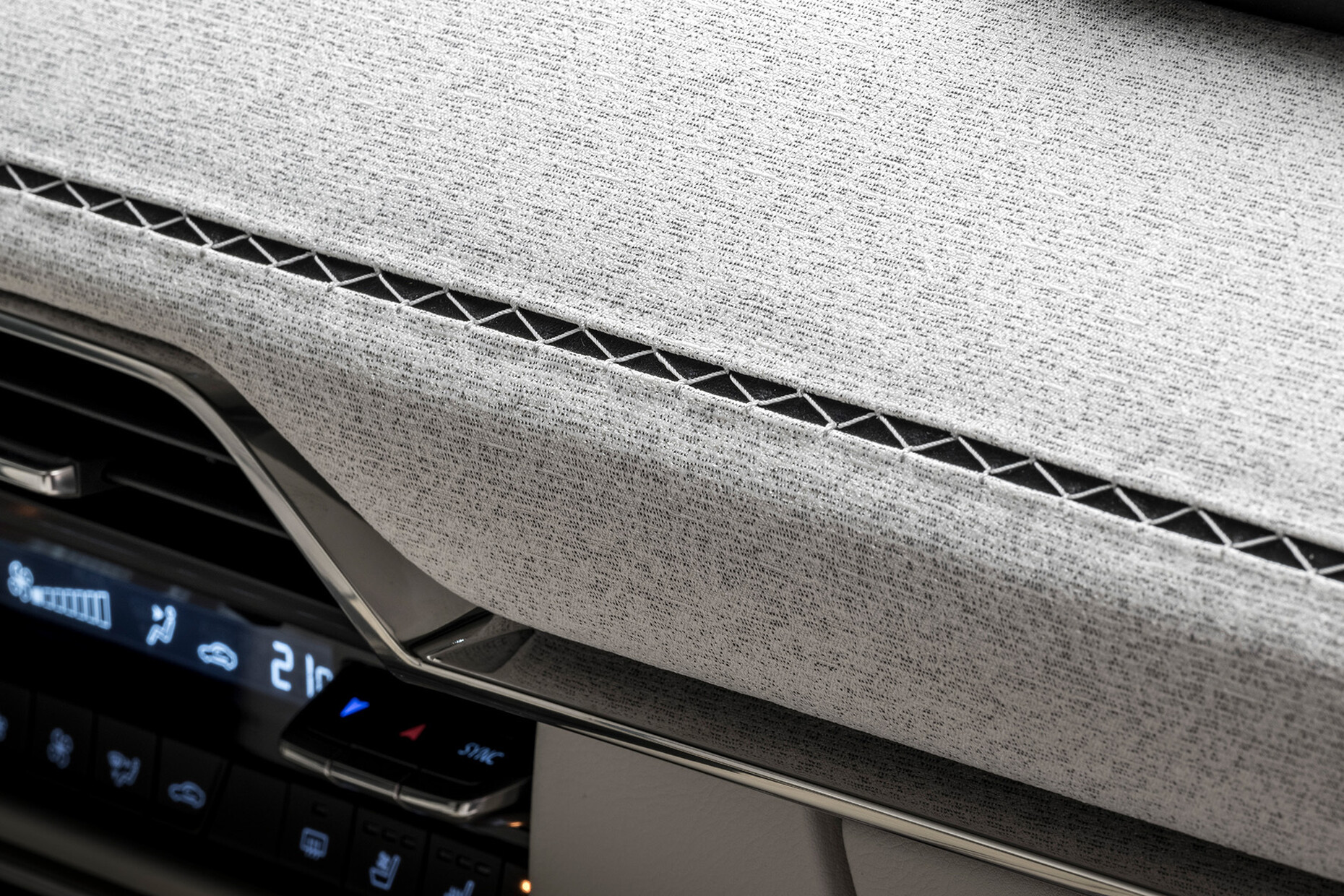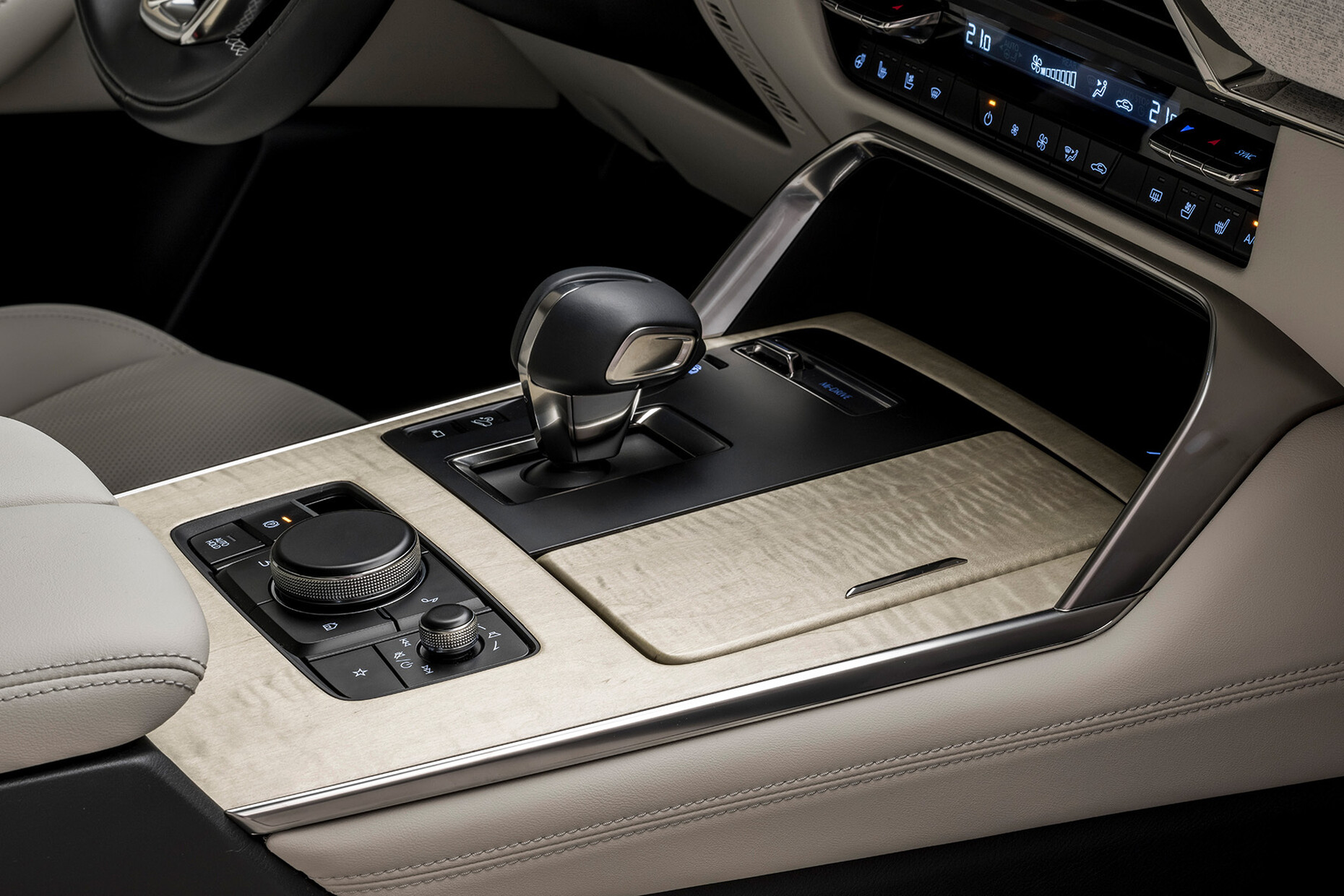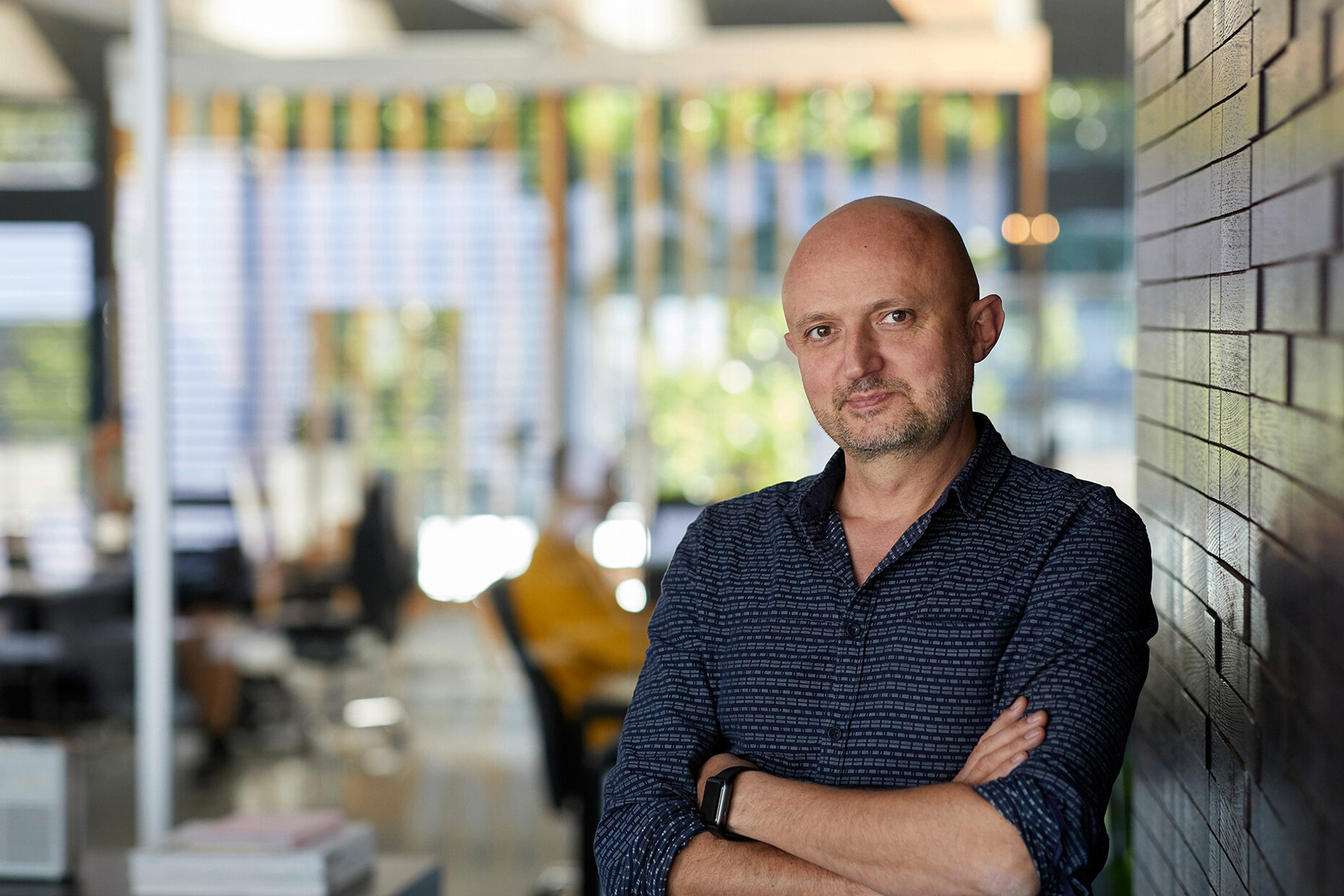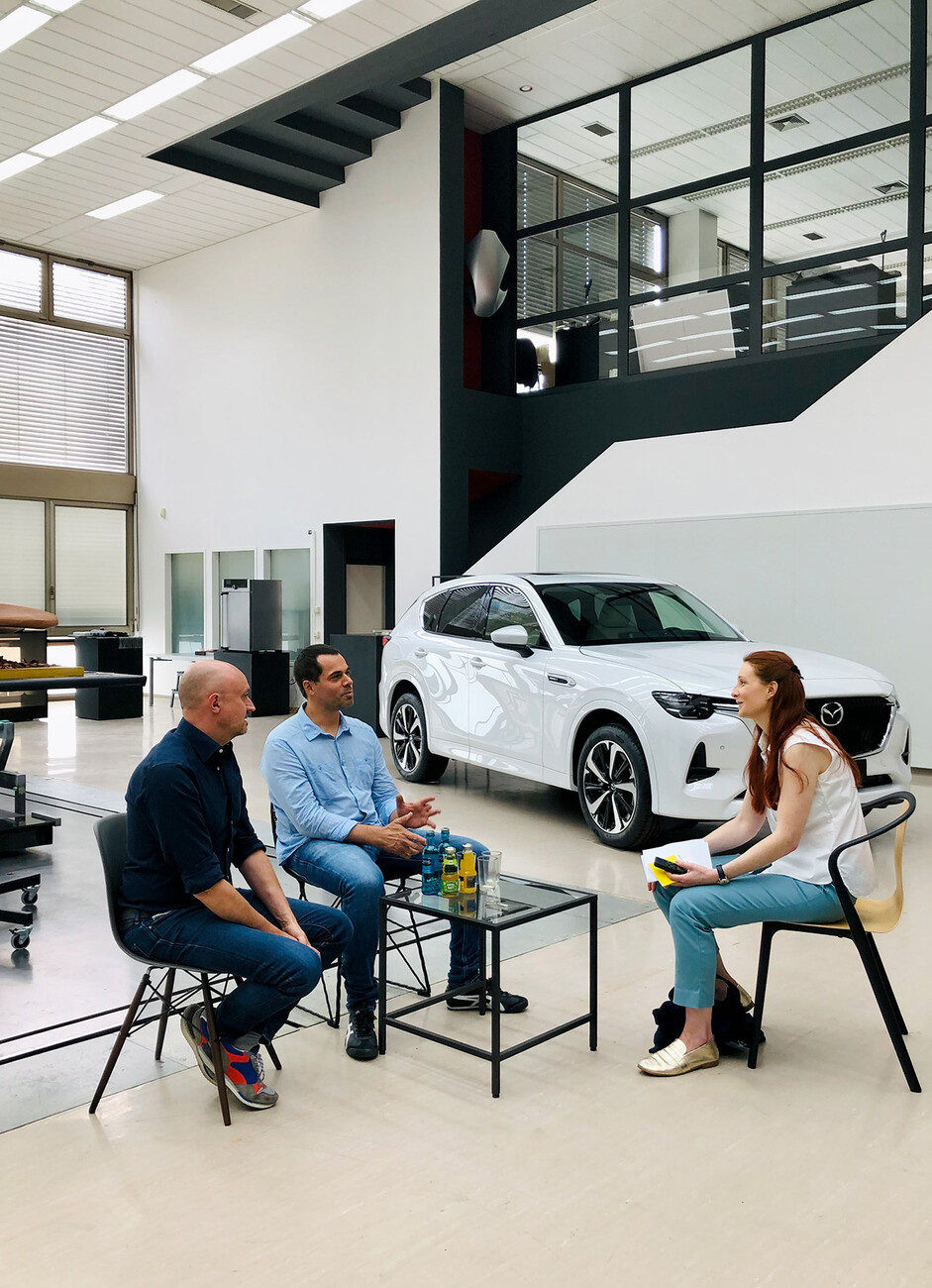Man-machine harmony
Every line of Mazda's new CX-60 is positioned with great deliberation. Elaborately worked out in advance in a clay model that is sometimes as large as the final car itself. This precision in clay modeling requires decades of practice, and indeed any modeler who wants to hold the master title of “Takumi” needs a good 20 years of professional experience in modeling vehicle molds. In this case, the “clay” consists of a mixture of wax, oil, fillers and pigment which is applied to a substrate and then molded. “The modelers infuse their emotions into the mold,” comments Jo Stenuit, Design Director at Mazda Europe. And this is crucial for the success of the final design, because “if a car has been created solely using digital means and the human factor is missing, then you can sense the omission subconsciously, too” says Stenuit. Using a sculptural approach and relying on sketches, the modelers rely on spring-steel tools to fashion a three-dimensional shape that can be flexibly altered. In other words, the design is in a state of constant flux. A sustainable way of working in many respects as no material is wasted in the case of clay modeling – every layer that is removed can be reused for the next mold.
The brief for the design of the CX-60 was “noble toughness” – as the intention was to create an elegant yet sporty SUV. This involved melding the ideas of the designers and modelers, spelling “a combination of all the experience that exists in the company,” as Andreas Feussner, Head of Clay Modeling at Mazda Europe, puts it. The technical specifications did not play a decisive role in the first creative brainstorms, because “you can’t limit yourself too much at the start, otherwise your creativity freezes up,” says Feussner. And creativity is especially important at the beginning of the design process, because in precisely this first phase the designers and modelers lend the car its special expression. At Mazda this is done entirely in the spirit of the “Kodo” design language which is for its part based on the aesthetics of natural movement in a still object. And it doesn’t require any grand gestures – the design is reduced to the essentials. It is the subtleties that make the CX-60 special – such as the new, more slender design of the lamps, for which the elements were stacked on top of each other instead of next to one another. Moreover, thanks to a negative curvature, the side surfaces do not reflect light evenly, thus giving the car a dynamism that appeals to the eye. At the same time, the new “Rhodium White” exterior color boasts a dense particle structure that in contrast with a white pearl finish impresses with gloss and depth.
The idea is users will be able to get in and not feel overwhelmed by the presence of technology. Instead, Mazda is focusing on deriving power from the clarity of the space – the corporation also uses the Japanese term “Ma” to describe this feeling of well-being. This has been achieved throughout the interior of the five-seater: In the premium fit-out, light maple wood surfaces, artfully woven textiles, and leather of the highest quality form a harmonious whole that is a pleasure to behold. Both new techniques and traditional Japanese skills came into play for the finishing: The patterns and yarns change depending on the angle of light falling on them and show an extraordinary depth thanks to the decorative “kakenui” stitching. In addition, the seams in the interior are textured like the bands of Japanese armor, thus providing the best possible freedom of movement for those in the car. Fine accents are set by decorative elements in chrome and white ambient lighting on the inside of the front and rear doors which marvelously emphasize the colors and textures of the surfaces. The alternation of materials and textures in line with the “Hacho” principle instill the interior with a vibrant dynamism that does not, however, disturb the eye. “Good design must be self-explanatory. The car should be a calm space so that you can concentrate on the actual driving,” says Jo Stenuit.
The Driver Personalization System that can be used to store your preferred settings for seat height, steering wheel angle, and outside mirrors, or the head-up display, is also part of the intended harmony between human and vehicle. The next time you get in, the system uses a camera to detect who is sitting behind the steering wheel and adjusts it accordingly. There’s a 12.3” monitor and a corresponding instrument display for navigation and entertainment. The CX-60's powertrain is also impressive: The plug-in hybrid, a mix of internal combustion engine and electric drive, delivers an impressive 327 hp, making it the most powerful Mazda yet conceived for road use. “We believe that simply relying on a single approach will never work,” Stenuit says. Building bridges, making thoughtful choices between tradition and modernity rather than following trends, and always valuing Japanese craftsmanship is part of the carmaker’s DNA. “Mazda is a very honest brand. We don’t promise anything with the design that we can’t then deliver,” concludes Jo Stenuit.
